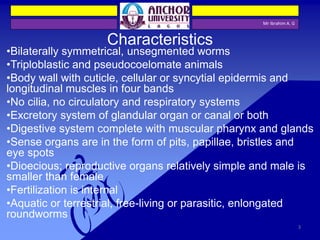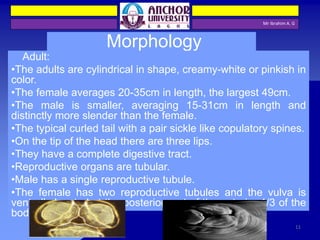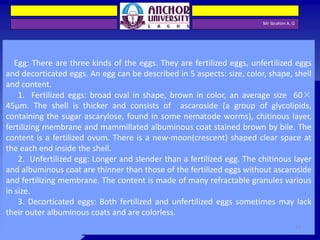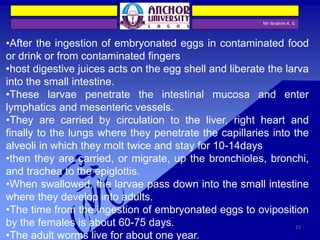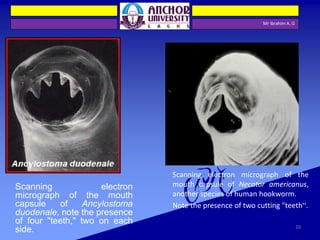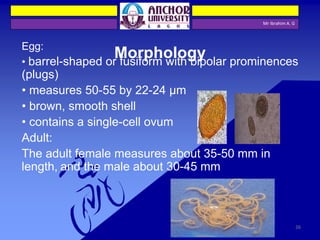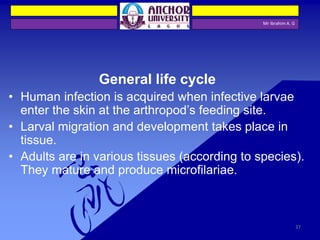Nematoda, or roundworms, are bilaterally symmetrical unsegmented worms that can be free-living or parasitic. They live throughout the world in various environments. Ascaris lumbricoides is one of the most common parasitic nematodes infecting humans. It lives in the small intestine where the female lays eggs that are passed in feces. After ingestion of embryonated eggs, the larvae hatch and migrate through tissues before maturing into adults in the intestine. Heavy infections can cause malnutrition and other complications.


